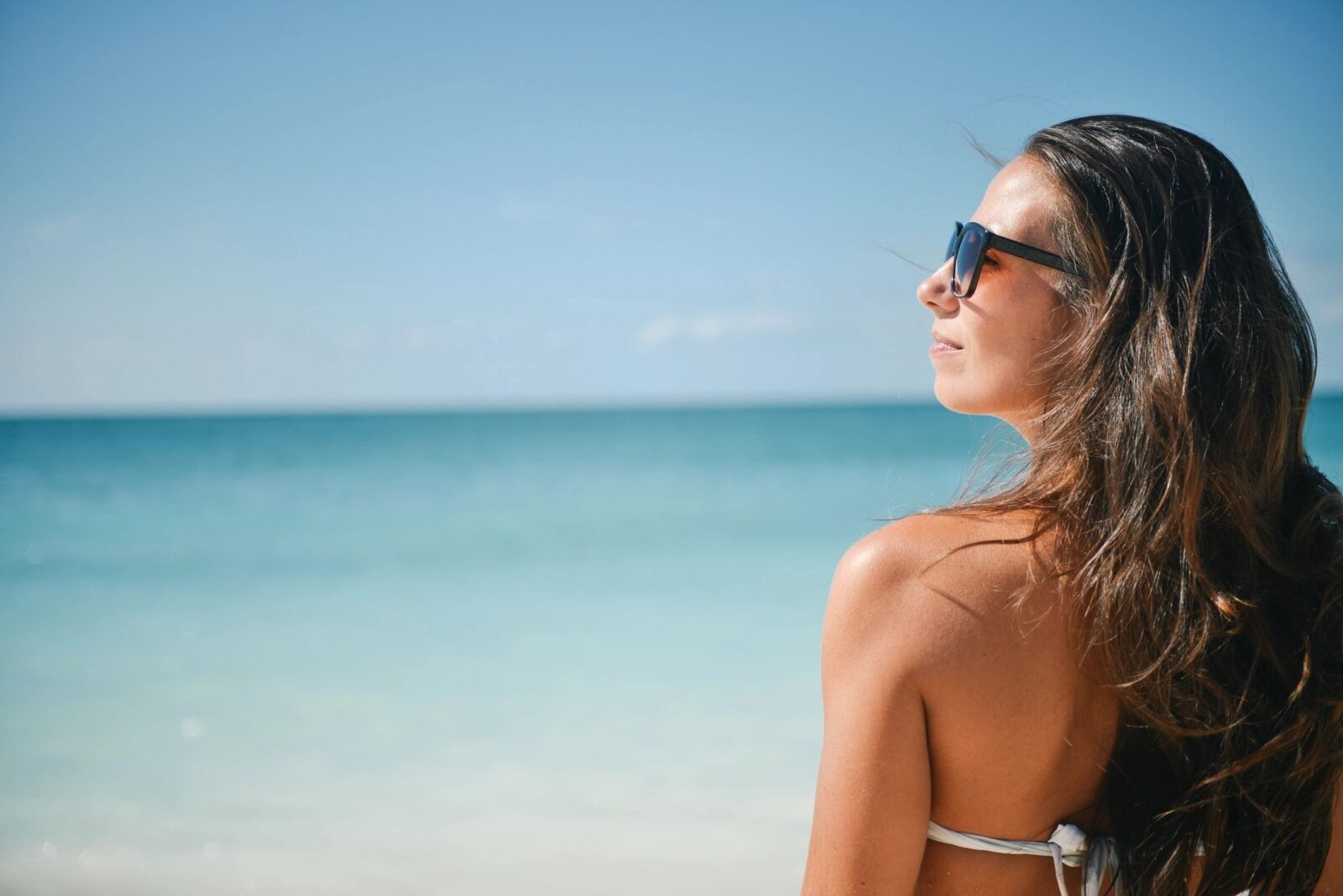Health & Wellness Report, Summer 2023
(Info from The Cleveland Clinic and Cancer.net)
Two types of rays are emitted from the sun. UVA rays sink deep into the skin and can cause unwanted dark spots, fine lines, uneven skin tone, and wrinkles. These rays can even pass through a window. Think of the A as meaning “Aging.” UVB damages DNA and causes sunburn.
After a sunburn, under the microscope, cells and blood vessels look damaged. With repeated sun damage, the skin starts to look dry, wrinkled, discolored, and leathery. Although the skin looks thicker, it’s weakened and will bruise more easily.
Avoiding Harmful Effects of the Sun
- Always wear sunscreen. Apply it every day even if it’s cloudy. A recent survey showed that just 14% of American men and 30% of American women regularly put sunscreen on their faces and other exposed skin before going out. Make it a habit, like brushing your teeth.
- Apply approximately one ounce of sunscreen (enough to fill a shot glass) at least 15-30 minutes before going outside. That amount is needed to cover all exposed areas of skin. Smooth it on; don’t rub it into the skin. Also use lip balm or lipstick that has a SPF (sun protection factor) of at least 30.
- Include coverage on ears, lips, face, and back of your hands (helps prevent dark spots).
- Choose a brand that protects against both UVA and UVB radiation. Make sure it’s water resistant with a SPF of 30 or higher.
- Reapply sunscreen every 2 hours, every hour if swimming or sweating.
- Be extra careful around water and sand. These surfaces reflect the damaging rays of the sun.
- Keep babies 6 months and younger completely covered and in the shade. Sunscreen is safe for babies over 6 mo. The Academy of Pediatrics recommends applying a minimal amount of sunscreen with SPF 15 or greater to their face and back of hands. Recent research reported that if sunscreens were used regularly by children through the age of 18, there would be a 72% reduction in skin cancers later in life.
- Accessorize with sunglasses and a hat that covers your ears, face, and neck.
- Be cautious if you’re taking medications that might make you more sensitive to the sun (antibiotics, antiinflammatories, blood pressure meds, chemo).
- Some sunscreens have ingredients that may irritate or cause a reaction on the skin.
- Avoid the sun in the middle of the day when UV rays, which cause sunburn, are the strongest.
- Check the expiration date!
Protect Your Eyes with Sunglasses
Sunlight reflecting off sand, water, or even snow further increases exposure to UV radiation and increases your risk of developing eye problems. Certain sunglasses can help protect your eyes.
- Choose sunglasses with a UV400 rating or “100% UV protection” on the label. These sunglasses block more than 99% of UVA and UVB radiation and provide the most protection against UV rays.
- Do not mistake dark-tinted sunglasses as having UV protection. The darkness of the lens does not indicate its ability to shield your eyes from UV rays. Many sunglasses with light-colored tints – such as green, amber, red, and gray – can offer the same UV protection as very dark lenses.
- Check to see if your tinted glasses have UV protection. If you are unsure, your eye care professional may be able to check for you. When you wear tinted glasses, your pupils dilate and can increase exposure of your retinas to UV light. Without UV protection, you are putting yourself at risk of harmful effects associated with solar radiation.
- Be aware that children should wear sunglasses that indicate the UV protection level. Toy sunglasses may not have UV protection; so be sure to look for the UV protection label.
- Consider large, wraparound-style frames, which may provide more UV protection because they cover the entire eye socket.
- Know that pricier sunglasses don’t ensure greater UV protection.
- Even if you wear UV absorbing contact lenses, wear quality sunglasses that offer UV protection.
- Even when you wear sunglasses, wearing a wide-brim hat and sunscreen can help further protect you from sun exposure.
Skin Cancer
UV light from the sun is the number one cause of skin cancer, but UV light from tanning beds is just as harmful. Exposure to sunlight during the winter months puts you at the same risk as exposure during the summertime. Cumulative sun exposure mainly causes basal cell and squamous cell skin cancer, while episodes of severe sunburn, usually before the age of 18, can cause melanoma later in life. UVA and UVB rays also affect the eyes and the skin around the eyes. Sun exposure may lead to cataracts, cancer (melanoma) of the eye or eyelids, and possibly macular degeneration.
The most common sign of skin cancer is a new lesion or a change in an existing mole. Get a checkup yearly and perform skin exams on family members!

